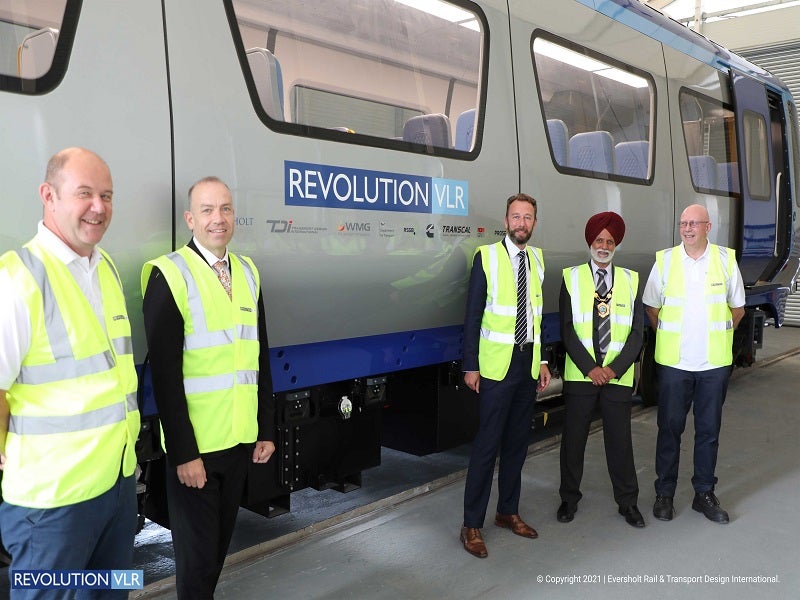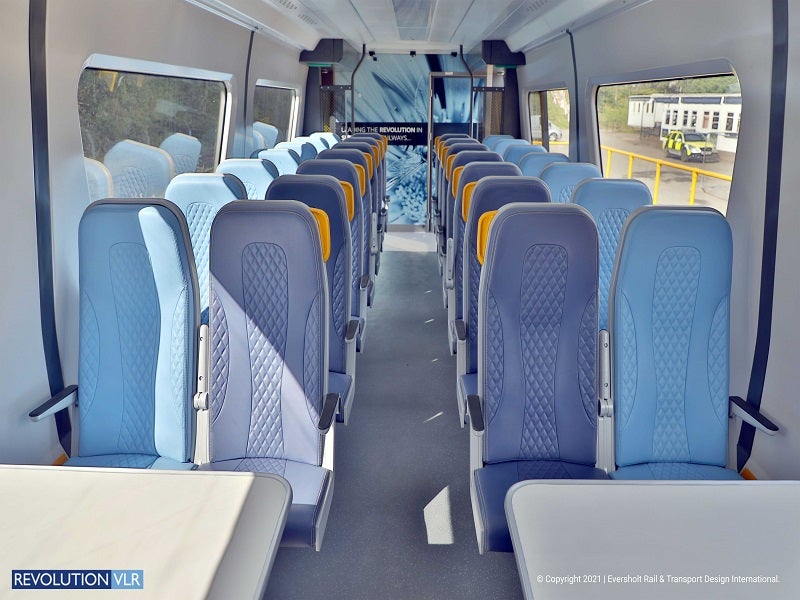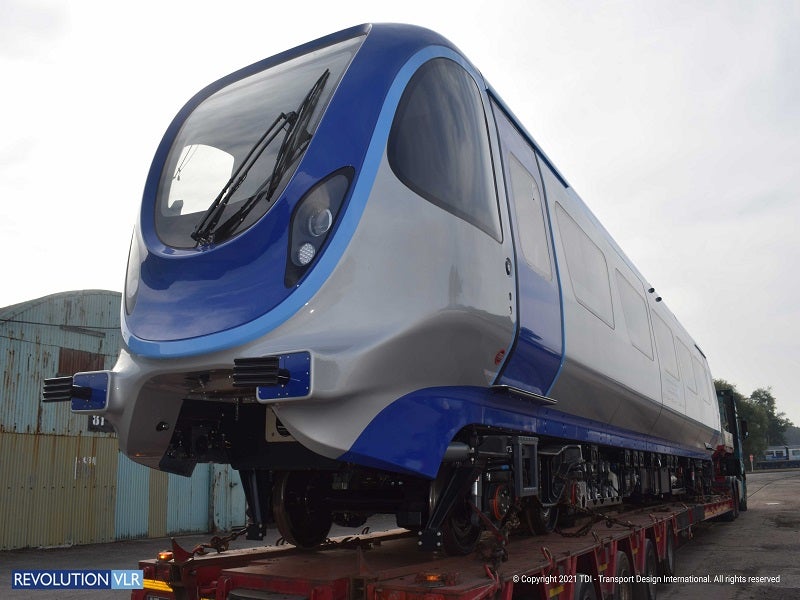The Revolution very light rail (VLR) demonstrator vehicle is designed to demonstrate a new innovative, lightweight, energy-efficient vehicle that can primarily operate on short routes where the use of heavy rail or tram systems is economically unviable.
The VLR demonstrator vehicle was developed by a consortium of Transport Design International (TDI), Eversholt Rail, the Rail Safety and Standards Board (RSSB), WMG at the University of Warwick, Cummins, Prose, RDM Group, and Transcal Engineering.
The improved and efficient Revolution VLR is proposed as a cost-effective and sustainable rolling stock solution for the UK Department for Transport’s (DfT) planned railway line reopenings and network extensions.
The consortium completed the build and integration of the demonstrator vehicle in August 2021. The vehicle will be put through a series of tests at the Quinton Rail Technology Centre in Long Marston, Warwickshire, to validate its performance ahead of its launch at a rail-connected location in Ironbridge, Shropshire.
The Revolution VLR vehicle successfully completed the initial functional tests at the Quinton Rail Technology Centre in September 2021. It was unveiled to potential sponsors and operators at a purpose-built marketing facility, located in Ironbridge, in October 2021.
Revolution VLR demonstrator design and features
The Revolution VLR demonstrator vehicle has a length of 18.5m, a width of 2.8m, and a height of 3.8m. It incorporates the latest technologies from the automotive and railway sectors. The composite bodyshell of the rolling stock is made of recycled carbon fibre while the design uses a modular vehicle assembly approach to support multiple layout configurations. The driving cabs are spacious and provide high visibility while the roof is reinforced with Kevlar.
The vehicle features four single sliding power plug doors for passenger access. The interior features a contemporary design with a focus on passenger comfort to drive a modal shift towards sustainable transportation. It is accessible and features ergonomically designed seats. The interior can be designed as per the specifications of the customers.
Facilities on board the Revolution VLR vehicle
The bi-directional VLR vehicle can accommodate 120 passengers, including 56 seated passengers. The railcars of the vehicle feature passenger climate control, CCTV cameras, and a passenger information system. Other passenger amenities include Wi-Fi and gadget charging points.
Rail Vehicle Accessibility Regulations (RVAR)-compliant wheelchairs are also provided in the vehicle. Furthermore, the vehicle meets the requirements of persons with reduced mobility technical specification for interoperability (PRM TSI) standards.
Revolution VLR vehicle propulsion
The vehicle is powered by a modular propulsion system, which runs on an electric battery or diesel.
The Euro VI-compliant, hybrid diesel-electric powertrain is derived from automotive engine technology. The powerpack includes battery packs made of lithium titanate (LTO) or lithium-manganese-cobalt-oxide (NMC).
The self-propelled vehicle has an LN25 bogie and can achieve high acceleration. It is equipped with a regenerative braking system to recover kinetic energy. It can run at a maximum speed of 104km/h.
Revolution VLR vehicle benefits
The lightweight design and hybrid power packs are intended to reduce energy consumption while increasing operating cost efficiency.
The VLR is expected to improve regional and rural connectivity through economic and sustainable transportation. It will provide zero-emission launches from stations and reduce noise levels.
Key players involved in the rolling stock project
TDI, which leads the Revolution VLR consortium, is responsible for the vehicle design, engineering, and manufacturing and supply of components.
The series production vehicles of the project will be owned and leased by UK-based rolling stock company Eversholt Rail, which is also working on the approvals for the rolling stock project and providing support to the vehicle design and validation programme. The project will also leverage Eversholt’s experience in rolling stock through-life asset management.
Engineering firm RDM helped in defining the electrical system specification while a team of engineers at WMG, the academic department at the University of Warwick, was involved in the development of the hybrid control strategy for the power pack and the high-voltage battery development.
Cummins, a designer and manufacturer of power generation products, is responsible for supplying powertrain components such as an ultra-low emission Euro VI diesel engine, a high-power battery, traction motors, and power electronics.
The RVLR demonstrator project received a DfT-funded grant from Rail Safety and Standards Board (RSSB), a not-for-profit company owned by industry stakeholders. Additionally, RSSB provided technical support, including standard advice and support, during the approvals process.
The vehicle is equipped with Altro Transflor Motus™ rail flooring supplied by Altro, a rail flooring solutions provider.










